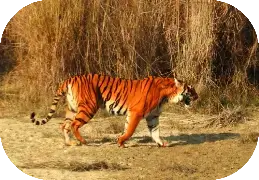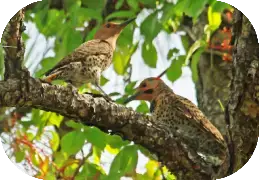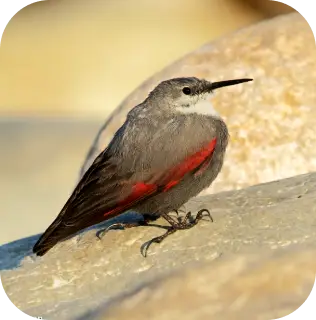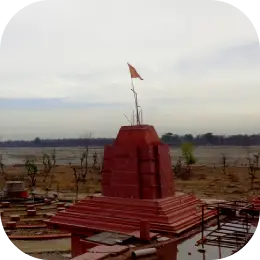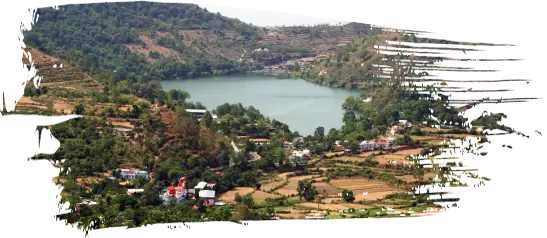More Information About Corbett National Park & Tiger Reserve
For wildlife enthusiasts worldwide, Jim Corbett National Park has remained a favorite for many of their countless awe-inspiring, adventurous tales. The forests of Jim Corbett are not only home to a number of remarkable animal and plant species, but also stand out as one of the most tourist-friendly national parks. The official tiger census report of 2022 reveals that among India's tiger reserves, Jim Corbett National Park in Uttarakhand boasts the highest tiger count, with 260 residing within the reserve and 319 using its resources.
Dating back to the late 19th century, CRT (Corbett Tiger Reserve) carries the distinction of being Asia's first national park. As an inaugural participant in Project Tiger, it has enjoyed focused conservation efforts from the very beginning, solidifying its reputation in wildlife tourism. The vast and lush forest of the national park today are home to numerous species of flora and fauna, with some of them known to be rare and even endangered. While many visitors are drawn in hopes of spotting the elusive white tiger, they often leave with memories of breathtaking natural landscapes nestled in the foothills of the lower Himalayas.
Corbett National Park Opening Date in 2024
Online booking for night stays in various forest rest houses in Jim Corbett National Park is available from 15th October 2024. The famous tiger reserve and national park, Corbett, will reopen from 15th October 2024 for wildlife jungle safaris.
A Quick Overview of Jim Corbett National Park
| Location |
Nainital District, Uttarakhand, India |
| Established |
National Park in 1936, Tiger Reserve declaration in 1973. |
| Total Area |
1,318 km2 |
| Major Species Found in Corbett Park |
Royal Bengal Tigers, Asian Elephants, Black bears, Leopards, Sloth Bears, Sambar deer, Indian Foxes,
Crocodiles, King cobra, kingfisher, white stork, Great white pelican etc. |
| Best Time to Visit Corbett |
October to June |
| Safari Types |
Jeep & Canter Safari |
| Safari Timings |
Morning & Evening |
| Other Attractions In & around the Park |
Corbett Museum, Garjiya Temple & Corbett Falls |
| Nearest Railway Station |
Ramnagar Railway Station (12 KM) |
| Nearest Airport |
Pantnagar Airport (80 KM) |
| Safari Zones in Jim Corbett National Park |
7 Safari Zones |
| Corbett’s Climate |
Summers (April to June) - Hot and dry (30℃ - 40℃),
winters (October to March) - Pleasant (10℃ - 30℃)
|
Looking into the Brief History of Corbett Wildlife Sanctuary & Tiger Reserve
Jim Corbett Park simply known as the Corbett National Park is one of the most prestigious and famous forest reserves in India. Asia's oldest National Park, Jim Corbett National Park has remained an important one ever since its beginning. Before being recognized as one, the national park was a vast forest with unregulated activities occurring throughout the jungle. In the late 19th century, specifically in 1879, nearly 300 sq. km. of its jungles were marked off to be conserved. In 1907, during the British colonial rule in India, it was proposed that the area be made into a game reserve. In 1936, due to the efforts of Sir Malcolm Hailey and the environmentalist Jim Corbett, the park was declared a National Park, marking a historic moment as the first of its kind in Asia. Initially, it bore the name Hailey National Park.
The park underwent a series of name changes, from Hailey National Park since its advent to Ramganga National Park in 1954. Which later, was renamed to be Jim Corbett National Park in 1955 to honor the contributions of the famous hunter-turned-naturalist, Jim Corbett, for his role in establishing the park and protecting its wildlife, particularly its tigers.
It was later, in 1973, that Corbett Wildlife Reserve was declared a Tiger Reserve in line with the Project Tiger Initiative introduced by the government of India at the time. During that period, India had a total of 263 tigers, but today, Jim Corbett Tiger Reserve alone boasts of a population exceeding that number.
Exploring the Geographical Landscape of Corbett National Park, Uttarakhand
Jim Corbett National Park is made up of hills, plateaus, grasslands, and is situated amidst the rough terrain of the Himalayas. These features all add to the park's rich biodiversity. The Ramganga River and the Ramganga Reservoir supply the park's inhabitants with sufficient water, apart from which the park is also home to numerous man-made and natural lakes. The whole area of the park includes the districts of Pauri Garhwal, Almora, and Nainital, and covers an area of 1,318 sq. km, with a core area of 520 sq. km and a buffer zone of 798 sq. km, that is made up of the Sonanadi wildlife sanctuary and the neighboring reserve forests. Sal trees, an essential resource for many species including tigers, elephants, and deer, are found in abundance in the national park's dense forests, with its grasslands also playing a significant role in the ecosystem, acting as both predators' hunting grounds and pasture grounds for herbivore animals.
Climate and Weather in Jim Corbett National Park
Jim Corbett National Park is located in the north Indian state of Uttarakhand and experiences a temperate climate with three primary seasons:
During the Summer months (April - June), temperatures in the region can become scorching hot, with the best time for a jungle safari and wildlife exploration being around midday, since due to the hot season, animals can be spotted frequently near the water bodies within the park. However, with the heat and humidity occasionally surpassing 40°C and 90% respectively, it becomes essential to take precautions.
The Monsoon season (commonly known as the rainy season) spans from mid-June to
mid-September. During the monsoons however, the park remains closed since the forests become inaccessible due to rains, and is also an important season for the animals, as it is also the time for them to engage in their mating rituals.
Winter (October - March) presents the most opportune time to visit Corbett National Park
and observe its diverse wildlife. Temperatures during these months vary between 5°C and 20°C, with the sun
casting a life-giving warmth, creating an incredibly pleasant ambiance.
What Can You Do in Jim Corbett National Park?
- Jungle Safari: The best way to see the wildlife and birds in Jim Corbett is to go on a jungle safari through the park's jungles. You can select from a variety of safaris based on your needs.
- Night Stay in the Jungle: Living in the woods for the night is an unforgettable experience, and Jim Corbett is one of the few national parks in the nation that permits overnight stays.
- Interpretation Centre: Located at the Dhikala zone's entry, the Interpretation Center also called the Dhangarhi Museum is a must-visit location for visitors to Jim Corbett that provides an informed wildlife viewing experience.
- Corbett Museum: Jim Corbett's home, which is around 30 kilometers from the park, has been turned into a museum where visitors may learn more about the famous naturalist's life, achievements, and major contributions.
- Wildlife Movie Show: For visitors lodging close to Dhikala and Bijrani, Jim Corbett even offers educational movie screenings that let visitors enjoy and learn more about the area.
- Watchtowers and Machans: Corbett's safari zones, including Dhikala, Bijrani, and Jhirna, include several watchtowers with breathtaking views of the wild, allowing guests to see the park's topography and wildlife from an alternative perspective.
- Birdwatching: Jim Corbett is a birdwatcher's heaven, home to approximately 600 different species of birds. The park provides exceptional opportunities for bird lovers to see and photograph birds in its natural habitat, from brilliant kingfishers to majestic eagles.
Jungle Safari Timings in Corbett National Park
| SAFARI ZONES |
SAFARI TIMINGS (1 October to 15 April) |
SAFARI TIMINGS (16 April Onwards) |
| Location |
Morning |
Evening |
Morning |
Evening |
| Bijrani |
06:30 to 10:30 |
14:00 to 18:00 |
05:45 to 09:45 |
15:00 to 19:00 |
| Jhirna |
06:30 to 10:30 |
14:00 to 18:00 |
05:45 to 09:45 |
15:00 to 19:00 |
| Durgadevi |
06:30 to 10:30 |
14:00 to 18:00 |
05:45 to 09:45 |
15:00 to 19:00 |
| Dhikala |
06:30 to 10:30 |
14:00 to 18:00 |
05:45 to 09:45 |
15:00 to 19:00 |
| Sitabani |
06:30 to 10:30 |
14:00 to 18:00 |
05:45 to 09:45 |
15:00 to 19:00 |
| Dhela |
06:30 to 10:30 |
14:00 to 18:00 |
05:45 to 09:45 |
15:00 to 19:00 |
| Garjiya |
06:30 to 10:30 |
14:00 to 18:00 |
05:45 to 09:45 |
15:00 to 19:00 |
| Pakhro |
06:30 to 10:30 |
14:00 to 18:00 |
05:45 to 09:45 |
15:00 to 19:00 |
Top Attractions to Explore in and around Jim Corbett Tiger Reserve
- Corbett Museum: Mindful of Jim Corbett, the Corbett Museum is the perfect place thirty kilometers from Ramnagar on the way to Nainital. It is one of the best places to visit close to Corbett National Park and is situated in Jim Corbett's heritage house.
- Corbett Falls: Corbett Falls, located 25 kilometers away from the Jim Corbett Tiger Reserve, is the ideal location for people looking for a calm and peaceful setting. The area is perfect for trekking considering the waterfall and its stunning surrounding.
- Garjiya Devi Temple: Garjiya Temple is approximately 10 km from Corbett National Park and stands out as one of the top nearby attractions. Dedicated to Devi Garjiya, an incarnation of goddess Durga, the temple is nestled alongside the Kosi River, creating the most mesmerizing setting.
- Kalagarh Dam: Also known as the Ramganga Dam, Kalagarh Dam is constructed on the Ramganga River and serves as the primary water source that quenches the thirst of Corbett National Park's wildlife, and offers an excellent location for birdwatching.
- Dhangarhi Museum: Situated at the Dhangarhi Gate of the Dhikala Zone, Dhangarhi Museum sheds light on the park's wildlife, forest area, and the life of Jim Corbett, after whom the park has been named.
- Hanuman Dham: Located 5 km from Ramnagar, this temple dedicated to Lord Hanuman, lies along the banks of the Kosi River, in close proximity to the Amadanda Gate.
How to Book Safari for Corbett National Park?
Bookings for safaris begin 45 days prior to the intended visit. All visitors must secure their entry permit in advance. Each safari vehicle is limited to one specific zone within the park and is required to stay within its designated boundaries. There's a fixed quota for vehicles in each zone at any given time; thus, it's advisable to secure your permit early and to arrive promptly on your scheduled visit day. You can book an online safari for Jim Corbett National Park through its official website. For assistance with online booking, please contact: +91-9212777224.
Available Safaris in Jim Corbett National Park
- Jeep Safari:A single jeep can accommodate up to 6 adults and 2 children aged 5 to 12 years.
- Canter Safari:Each canter offers seating for 16 individuals.
The Corbett Tiger Reserve comprises 8 distinct safari tourism zones. Each has its own dedicated entry
gate:
| Zone Name |
Entry Gate |
Visit Time |
Nearest City |
| Jhirna |
Dhela |
Throughout year |
Ramnagar |
| Dhela |
Dhela |
Throughout year |
Ramnagar |
| Bijrani |
Amdanda |
15 Oct - 30 June |
Ramnagar |
| Dhikala |
Dhangari |
15 Nov - 15 June |
Ramnagar |
| Durgadevi |
Durgadevi |
15 Nov - 15 June |
Ramnagar |
| Sonanadi |
Vatanvasa |
15 Nov - 15 June |
Kothdwar |
| Pakhora |
Pakhro |
15 Nov - 15 June |
Kothdwar |
| Garjia |
Garjiya |
15 Oct - 30 June |
Ramnagar |
- Jhirna Zone: Renowned for its scenic beauty, Jhirna stands out as a prime tourist attraction. It's the only zone open year-round in Jim Corbett National Park, and is popular among wildlife enthusiasts for bear sightings.
- Dhikala Zone: Best visited between 15th November and 15th June, the Dhikala zone, on the fringes of Patil Dun, is a hotspot for spotting Bengal Tigers, cheetahs, elephants, and more.
- Bijrani Zone: Blessed with a mixed topography, the best time to explore Bijrani is from 1st October to 30th June. Tiger sightings here are relatively more frequent compared to the park's other zones. Convenient forest rest house accommodations are available.
- Sonandi Zone: Open to tourists year-round, the best time for a visit is between November and April. From the Sonanadi Zone, you can see Asiatic elephants, tigers, and other animals in their natural habitat.
- Durga Devi Zone:Within the Corbett Tiger Reserve, the Durga Devi Zone is a safari gem. Located in the reserve's northeast region, it is blessed with Ramganga and Mandal rivers, where wild elephants, otters and the iconic Mahseer fish can be sighted, near Domunda Bridge.
- Dhela Zone: Dhela, a newer eco-tourism zone, offers a mix of forests, grasslands, and river landscapes. WIth its diverse habitat, it supports different kinds of flora and fauna, making it a popular spot among nature lovers and photographers.
- Garjia Zone: Home to the revered Garjia Temple, this zone, apart from its spiritual significance, offers a serene environment to observe wildlife. Here, you can spot a diverse species of wildlife owing to its dense forests and open grasslands.
- Pakhro Zone: Pakhro, with its lush greenery and serene riverbanks, is a tranquil haven for wildlife enthusiasts. As one of the newer zones, it promises unspoiled landscapes and a chance to experience nature at its rawest, away from the usual crowds.
Exploring Stay Options in Jim Corbett Tiger Reserve
Jim Corbett National Park boasts an array of accommodations for those wondering where to stay. Offering a range of options, from luxury resorts and hotels, to immersive camps, at Jim Corbett, every stay promises the best of facilities and a unique experience to stay among the wild. Stay at the finest hotels, resorts, camps, and forest lodges in Jim Corbett National Park for an unforgettable retreat with nature.
- Luxury Resorts & Hotels in Corbett: Jim Corbett has several high-end resorts that offer luxurious amenities such as spa services, fine dining, and lavish rooms, that will take your experience in the wild to an entirely different level. Many of these resorts are set in picturesque locations and deliver personalized services.
- Forest Rest Houses in Corbett: Jim Corbett Tiger Reserve features forest guest houses in each of its safari zones. These guesthouses are run by the government and are located within the park. Reservations can be made through the official forest department website or office. Among them, Dhikala is one of the most sought-after forest guest houses inside the Corbett Tiger Reserve.
- Budget Hotels and Lodges in Corbett: Within Corbett tiger reserve, there are budget hotels that let you immerse in the nocturnal ambiance of the jungle without breaking the bank. Moreover, in nearby towns like Ramnagar and Dhikuli, a variety of budget hotels, lodges, and guesthouses are available, catering to travelers seeking economical options.
Top Excursions from Jim Corbett Tiger Reserve
- Ramnagar: This town serves as the gateway to Corbett National Park and is known for its scenic beauty and proximity to the park. Here you can spend your time exploring the local markets and the mesmerizing Kosi River.
- Nainital: Merely a 3 to 4-hour drive from Corbett, located about 60 km away, Nainital stands out as the best hill station to visit near Corbett Park. The lake town offers beautiful landscapes, the joy of boating in Naini Lake, and the divine Naina Devi Temple, making it the perfect haven for those seeking relaxation amidst the mountains.
- Ranikhet: Located just 76 kilometers from Jim Corbett Tiger Reserve, this serene hill station is a short 2 to 3-hour drive away. While it shares the tranquility of places like Nainital, Ranikhet offers a less crowded escape. It stands as one of the best places to visit in conjunction with a trip to Jim Corbett Tiger Reserve.
- Almora: Just 100 km from Corbett Tiger Reserve, Almora stands as a testament to history in the hills. This hill town is among the best places to visit near Corbett, made known by its ancient temples, bustling markets, and breathtaking viewpoints such as the Bright End Corner and Kasar Devi.
- Bhimtal: A less crowded alternative to Nainital, Bhimtal boasts of a serene lake set in a picturesque town, and makes for the perfect destination for activities like boating and trekking, offering a fun excursion after your Corbett tour.
- Pangot: A serene hamlet in the Kumaon hills, Pangot is a must-visit for bird watchers. A short distance from Jim Corbett national park, Pangot is most known for being a paradise for bird lovers.
- NaukuchiaTal: Located amidst lush greenery and terraced fields, NaukuchiaTal is known for its nine-cornered lake. A visit to the beauty promises leisurely boat rides, picturesque views, and a much-needed break for your mind and soul.
- Rishikesh and Haridwar: If you're interested in spirituality and adventure, you can travel approximately to reach Rishikesh and Haridwar, two holy cities on the banks of the Ganges River. They are renowned for yoga, adventure sports, and the evening Ganga Aarti ceremony. They are located 150 km from Jim Corbett tiger reserve.
Conservation Efforts in Jim Corbett Wildlife Reserve
- Project Tiger: Started in 1973 by the Government of India.
- Crocodile Conservation Project: Initiated in 1976 with support from the United Nations Development Programme and the Food and Agriculture Organization.
- Project Elephant: The project was initiated in 1992 by the Government of India's Ministry of Environment and Forest.
Among India's most important wildlife conservation sites, Jim Corbett National Park, has a long history aimed at preserving its diverse ecosystem, including its endangered population of the Bengal tiger. It was under the Wildlife Protection Act of 1972 that Jim Corbett was provided with legal protection for its wildlife, where conservation initiatives focused on monitoring tiger populations, protecting their habitats, and preventing poaching through anti-poaching patrols and the use of modern technology. It was also considered necessary to protect their natural habitat of Sal forests, grasslands, riverine ecosystems, and wetlands as well.
In 1991, the buffer zone areas around the park were expanded by including the Sonanadi Wildlife Sanctuary to help mitigate human-wildlife conflicts by providing space for local communities to coexist with wildlife. Up until then, the involvement of local communities in conservation efforts was also ensured to foster a sense of responsibility towards wildlife conservation.
All the efforts in these years have contributed to making Jim Corbett home to the highest number of Bengal tigers. Now, more than 250 tigers roam in the wilds of Corbett National Park.
Top Recommended Travel Tips for Visiting Corbett Tiger Reserve:
- Permits and Bookings: Obtain the necessary permits for your safari bookings in Corbett in advance, especially during peak seasons. It may be challenging to secure the desired zone permit or even a seat upon arrival.
- Timings: Safaris typically take place in the early morning and late afternoon. Ensure punctuality, as the park maintains strict entry and exit times.
- Binoculars and Camera: Often, animals might be visible but from a considerable distance. Carrying binoculars or zoom cameras will enhance your viewing experience.
- Health Precautions: Bring essential medicines and remember to stay hydrated, especially during the summer months.
- Accommodation: For added convenience, opt for accommodations either within the park or nearby, where you can find options ranging from luxury resorts to budget-friendly lodges.
- Local Cuisine: To fully experience the region, sample local dishes. Seek recommendations from locals or the staff at your accommodation.
Jim Corbett National Park Distance from Major Cities
| Delhi – Corbett Distance |
238 Km Approx. |
| Dehradun – Corbett Distance |
181 Km Approx. |
| Haridwar – Corbett Distance |
133 Km Approx. |
| Rishikesh – Corbett Distance |
150 Km Approx. |
| Almora – Corbett Distance |
110 Km Approx. |
| Nainital – Corbett Distance |
62 Km Approx. |
| Ranikhet – Corbett Distance |
72 Km Approx. |
| Kausani – Corbett Distance |
136 Km Approx. |
| Mussoorie – Corbett Distance |
186 Km Approx. |
























